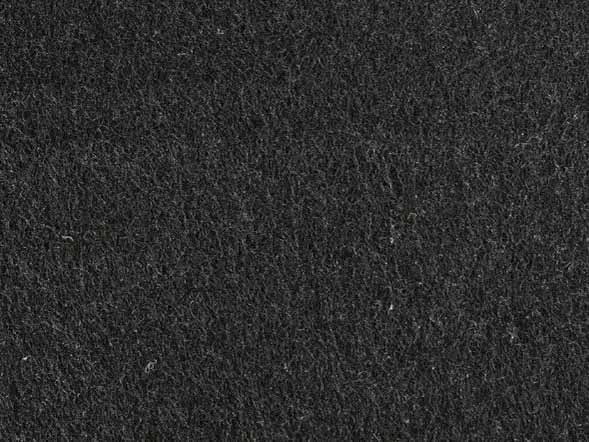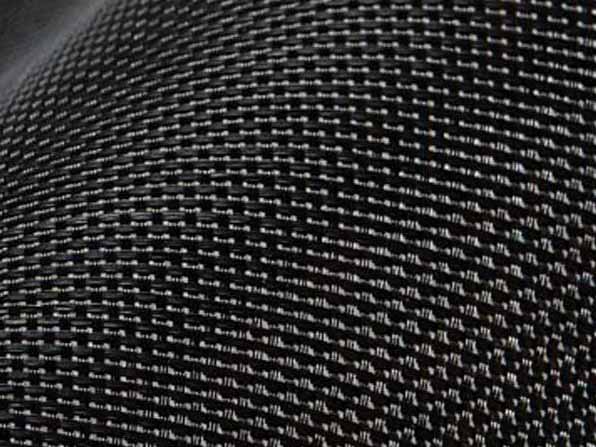Call (800) 583-4891
GEOTEX - Geoxtextile Fabric
GEOTEX is a line of woven and nonwoven geotextile fabrics that are used for filtration, separation, soil and slope reinforcement, and soil stabilization applications. Geotex fabrics meet AASHTO/NTPEP standards and are often used in the construction, and landscaping industries for projects such as road paving, drainage systems, and erosion control.

SHIPPING
✔ All items ship for free (standard ground, see map)
☏ Call: (800) 583-4891 for pricing and shipping questions.
Shipping estimates shown on the map pertain to this specific product only. Orders typically ship within 1-2 business days if the order is placed before 12:00 noon EST. Transit times displayed in the map are listed in business days, and are approximate. The day that the order is shipped is not counted as a transit day.

FAQ
Proper Installation of GEOTEX
With proper installation of Propex GEOTEX® geotextiles, you will increase the performance of both pave and unpaved roadways along with parking lots, airports, storage areas, and docks by stabilizing the subgrade. Geotextiles offer three very important functions: separation, drainage, and reinforcement.
The fabric works as an absorbent separation layer preventing the aggregate and subgrade from becoming a part of the water passing through. The successful application of geotextiles for these applications requires proper installation.
The 4 Proper Installation Steps Include:
- Subgrade Preparation
- Geotextile Placement
- Aggregate Placement
- Aggregate Compaction
Proper stabilization geotextiles can be used in almost all weather and temperature conditions. By adequately planning and preparing each installation step will also greatly speed up construction and ensure greater performance. We are providing recommendations in these guidelines for the installation of geotextiles in stabilization applications.
The guidelines are meant to help contractors who are responsible for the installation of geotextile for excellent stabilization. These guidelines are general and good for average construction conditions. That said, specific site conditions, design requirements or other situations may need modifications to the guidelines.
1. Preparing Sub-Grade
This step should be applied regardless of the subgrade strength. Beforehand, you must clear all stumps, large stones, or other sharp objects that can puncture the fabric. Preparing roadway subgrade usually involves removing all vegetation, roots, and subsoil.
Localized soft or unsuitable subgrade areas might have to be excavated and backfilled with suitable material. Some very soft soil applications could benefit by leaving vegetation, roots, and topsoil in place to limit subgrade soil becoming disturbed and losing strength.

Geotex Fabric Installation
2. Placement of Geotextile
It only takes two people to place the GEOTEX® Stabilization Geotextiles. Take the fabric and roll it on to the subgrade, starting at the place where you have easy access to construction equipment and compatible with the layout plan.
For very soft subgrade( CBR<1) the driveway fabric layout and aggregate placement should start with firm soil on the site in order to establish an “anchor point” then the fabric can be rolled onto softer sections. Do Not drag the geotextile over or across the subgrade.
Usually, the geotextile is laid out in the direction of construction traffic but some project dimensions might need to be altered. Geotextile panels should be overlapped side-to-side and end-to-end in the direction of the aggregate placement. The overlapping ranges should be 1.5 to 3 feet, depending on the strength of the subgrade.

Needle Punched Non-Woven Geotextile Fabric
As an alternative, adjacent fabric edges can be sewn together instead of overlapping. You should use sewn seams when the geotextile provides significant tensile reinforcement. This is a good example when the subgrade is very soft (CBR<0.5).
Sewn seam strength and fabric orientation are important design specifications. For those critical applications, adjacent panels must be placed and sewn in accordance with the specifications from the engineer. Field sewing is done using a portable sewing machine powered by a generator and usually requires three or four laborers.
Panels that are pre-sewn can be supplied from the factory. To get some good tips on geotextile sewing, please see our Engineering Bulletin on geotextile seaming options.
Soils or pins can be used to hold the fabric edges and overlaps down until aggregate is in place. On curves, the geotextile can be folded or cut to adhere to the curve. Keep in mind, the fold or overlap should be in the direction of construction and held in place as described above.
3. Placing Aggregate
Aggregate should be placed and then spread on the fabric using the usual construction procedures and equipment. Items such as pins, rocks, and soil should be used ton the edges of the fabric to hold it down preventing it from lifting during placement of the first aggregate. At this point, the aggregate is spread over the geotextile.
Use a tracked bulldozer for this procedure. It is recommended you use a ground pressure model for work on soft subgrades.
The lift density should not be under 6 inches. The first lift should be as thick as needed to prevent rutting to less than 4 inches. During the spreading process, the bulldozer should blade into the lead and slightly upward to prevent any stressing to the fabric. This procedure should be repeated for each load until the fabric is completely covered.
By watching the aggregate layer rutting, the bulldozer operator should be able to decide which areas will need additional aggregate for good stability.
Dealing with very soft subgrade, care should be shown during aggregate placement to guarantee that the fabric does not move out of position and the subgrade does not become overstressed. Some very soft soil conditions known as “mud waves” may lead to overstressing the subgrade during fill placement causing the subsurface soil to move away from the loaded area.
Usually, there is not a problem if they do not heave above the surface of the aggregate base. If it’s anticipated there will be severe mud waves, a Propex representative can offer information on construction procedures to minimize any unfavorable results.
Sudden stops or turns by the equipment operating over the geotextile should be avoided With normal conditions, vehicles should not be allowed to go directly over the geotextile.
- If the lack of space makes it impractical, the possible damage from direct vehicle contact should be taken into consideration on a test section.
- If the fabric is damaged and cannot fulfill the project requirements, a more damage resistant geotextile should be specified.
Should the fabric become damaged during installation, the section damaged should be exposed and a patch of fabric placed over the area. The patch should be large enough to overlap onto the damaged areas then the aggregate is replaced and compacted.
4. Compaction Specification
Compaction is required by project specifications. Aggregate should be compacted by walking the tracked bulldozer back and forth over the aggregate while waiting for the next load. The construction traffic will also compact the aggregate until stability is obtained.
The final compaction is achieved by rolling the area with a vibratory compact starting with vibration for several passes then with full vibration.
If any weak areas are discovered during the final compaction, chances are there is inadequate thickness in those areas. You should not grade ruts down, just fill in with additional aggregate and compact to the specified density. This also goes for any future rut maintenance that might arise.

Geotextile Fabric Used for Roadway
Monitoring Construction
It’s very important that construction conditions are monitored. If the subgrade has a lower strength than predicted by design, the structural section design thicknesses must be re-evaluated. Discovering rutting of the aggregate layer can pinpoint weak subgrade areas so design adjustments can be made.
Geotexile Non-woven Products
These products are made from the highest quality polypropylene stable fibers and should be punched to form a dimensional stable fiber network including fabrics for separation and stabilization. Non-woven products offer proven performance that are compliant with AASHTO/NTPEP standards and are available in an array of styles to match your specific project needs and specifications.

Large Geotextile Roll On JobSite
The Benefits:
- Will reduce aggregate thickness in road work
- Will mitigate dust in unpaved roads
- Offers excellent cushion protection
- Will separate aggregate from soil for extending road life
- Resists biological and chemical environments often found in soils
- AASHTO/NTPEP Certified
Applications:
Stabilization/Separation
GEOTEX non-woven geotextiles are perfect for unpaved road while increasing the performance life and reduce the overall thickness of road sections by using less aggregate during construction.
Filtration
GEOTEX non-woven geotextiles offer excellent hydraulics and soil retention, making them perfect for filtration in subsurface drainage systems and below hard armor systems.
Environmental Waste Management
GEOTEX non-woven geotextiles offer excellent hydraulics and soil retention, making them perfect for filtration in subsurface drainage systems and below hard armor systems.
Orange Fabric Barriers
GEOTEX uses a very visible non-woven barrier fabric that will alert workers with bright orange fabric to prevent further excavation in areas that have buried contaminants or other dangers.


